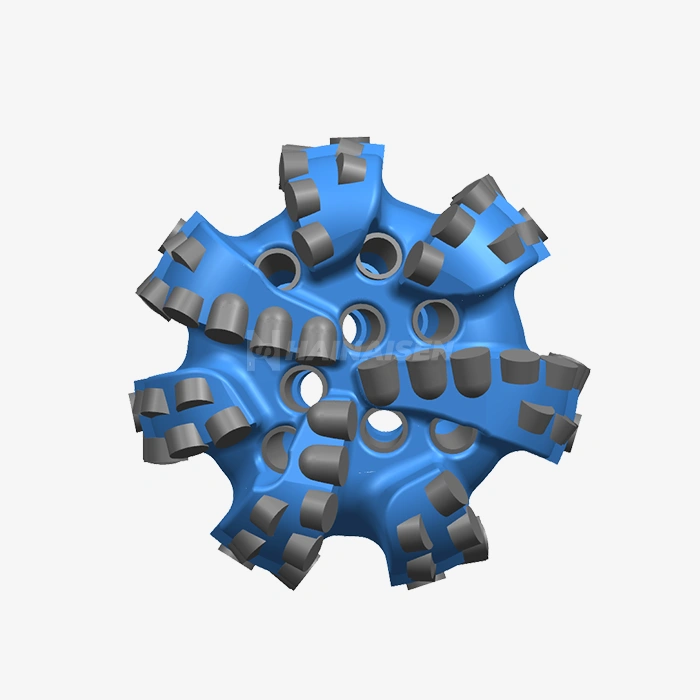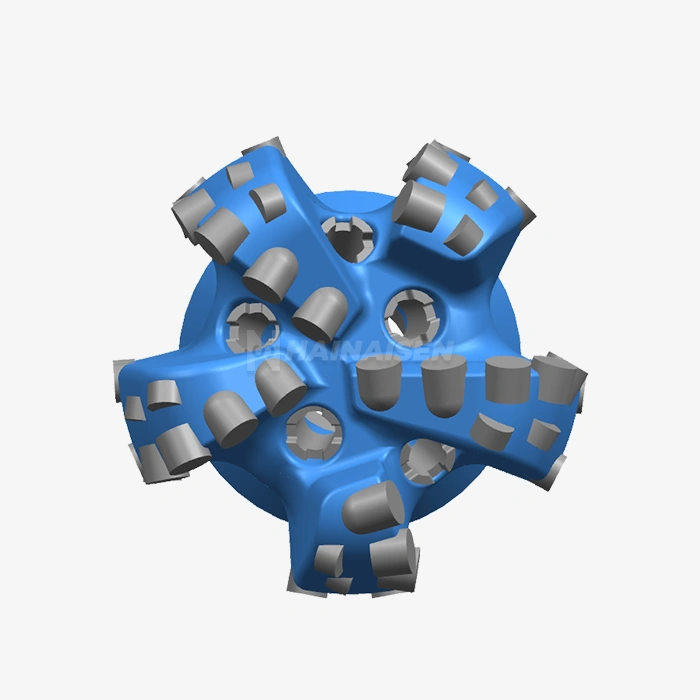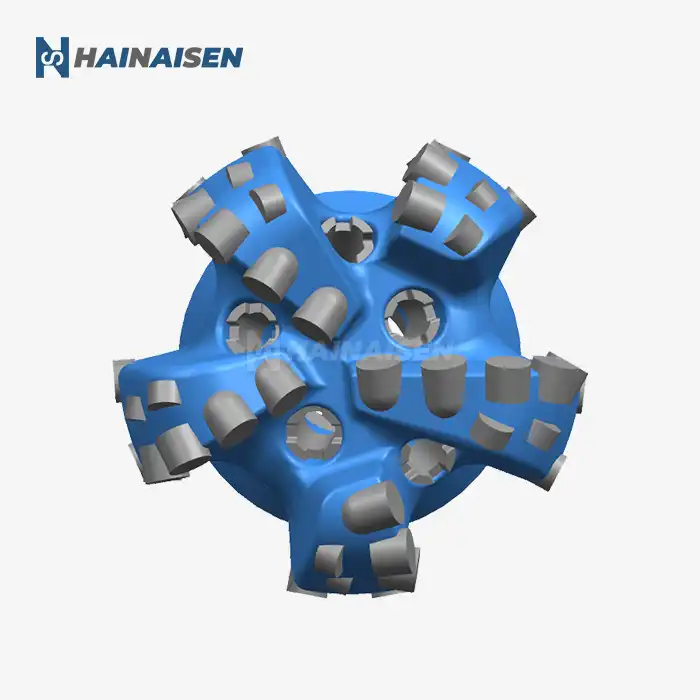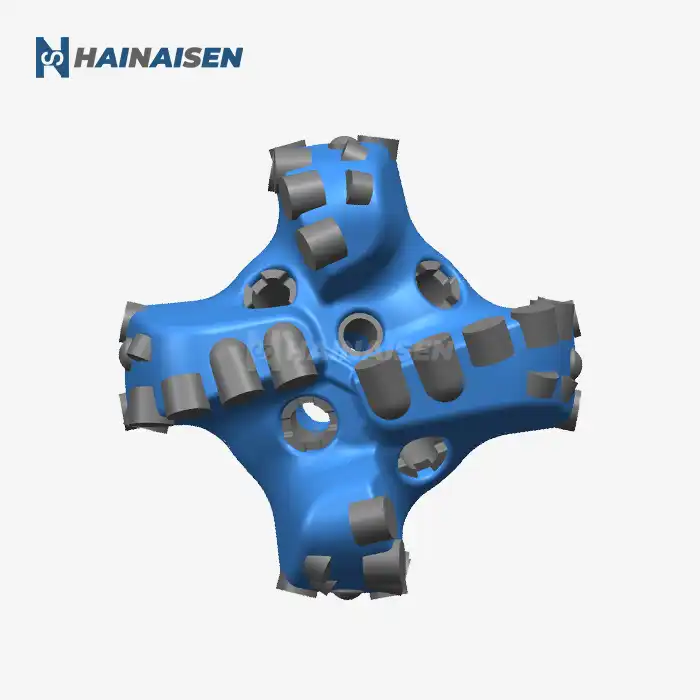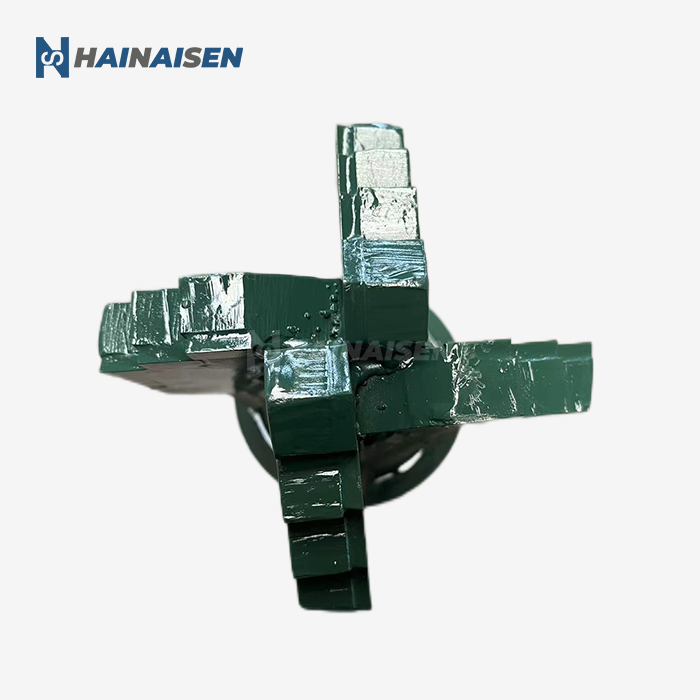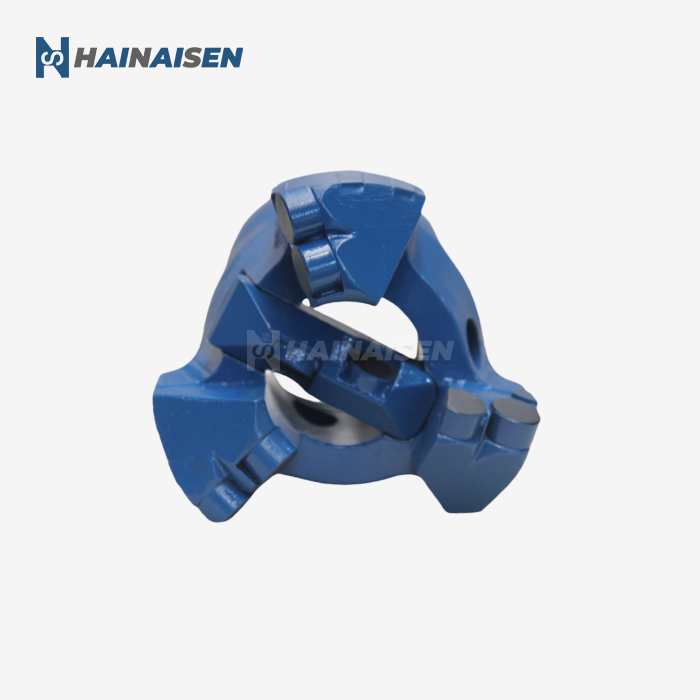Which is More Efficient? PDC or Tricone Bits for Oil Drilling
The efficiency of PDC and tricone bits varies depending on the specific drilling conditions and formation characteristics. Petroleum PDC Oil Drill Bits generally offer superior efficiency in softer to medium-hard formations due to their unique design and cutting mechanism.
Advantages of PDC Bits:
- Higher penetration rates: PDC bits use a shearing action to cut through rock, allowing for faster drilling in many formations.
- Improved durability: The polycrystalline diamond cutters are highly resistant to wear, leading to longer bit life.
- Reduced trips: Longer bit life means fewer trips out of the hole for bit replacement, saving valuable rig time.
- Better directional control: PDC bits provide more precise steering in directional drilling applications.
Advantages of Tricone Bits:
- Versatility in hard formations: Tricone bits excel in drilling through hard, abrasive rocks.
- Lower initial cost: Tricone bits are generally less expensive to purchase than PDC bits.
- Effective in fractured formations: The rolling cutter design can handle inconsistent rock structures well.
While PDC bits often outperform tricone bits in terms of overall efficiency, particularly in softer formations, the choice ultimately depends on the specific drilling environment. Factors such as formation hardness, abrasiveness, and depth must be carefully considered to determine which bit type will provide the best performance and cost-effectiveness for a given project.
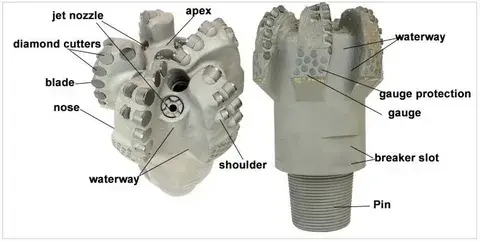
Petroleum PDC Oil Drill Bit vs. Tricone: Key Differences in Hard & Soft
Understanding the key differences between Petroleum PDC Oil Drill Bits and tricone bits in hard and soft formations is crucial for optimizing drilling operations. These distinctions can significantly impact drilling efficiency, bit life, and overall project costs.
Performance in Soft Formations:
In soft to medium-soft formations, PDC bits generally outperform tricone bits:
- Cutting mechanism: PDC bits use a shearing action that is highly effective in softer rocks.
- Penetration rate: PDC bits typically achieve faster rates of penetration (ROP) in soft formations.
- Bit stability: The fixed cutter design of PDC bits provides better stability and control.
- Formation suitability: Ideal for shales, siltstones, and other softer sedimentary rocks.
Tricone bits in soft formations:
- May experience balling (clogging of the bit with formation material)
- Generally have lower penetration rates compared to PDC bits
- Can be more susceptible to bit whirl in softer formations
Performance in Hard Formations:
In hard and abrasive formations, tricone bits often have the advantage:
- Crushing action: Tricone bits use a grinding and crushing mechanism effective in hard rocks.
- Abrasion resistance: The rolling cutter design can handle highly abrasive formations better.
- Impact resistance: Tricone bits are more resilient to the shock loads encountered in hard, fractured formations.
- Formation suitability: Excellent for granite, basalt, and other hard igneous or metamorphic rocks.
PDC bits in hard formations:
- May experience accelerated wear on cutters
- Can be prone to impact damage in very hard or fractured formations
- Often require specialized designs or enhanced durability features for hard rock applications
The choice between PDC and tricone bits for hard or soft formations should be based on a thorough analysis of the expected drilling conditions. Factors such as formation hardness, abrasiveness, homogeneity, and depth all play crucial roles in determining the most suitable bit type for optimal drilling performance.
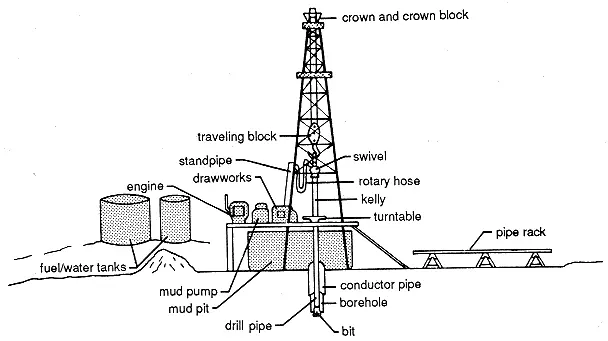
Do PDC Bits Last Longer Than Tricone Bits in Abrasive Oil Reservoirs?
The longevity of drill bits in abrasive oil reservoirs is a critical factor in determining overall drilling efficiency and cost-effectiveness. When comparing Petroleum PDC Oil Drill Bits to tricone bits in these challenging environments, several factors come into play.
Factors Affecting Bit Life in Abrasive Reservoirs:
- Formation characteristics: Hardness, abrasiveness, and homogeneity of the rock
- Drilling parameters: Weight on bit (WOB), rotary speed, and hydraulics
- Bit design: Cutter material, placement, and overall bit structure
- Drilling fluid properties: Ability to clean and cool the bit effectively
PDC Bit Performance in Abrasive Conditions:
PDC bits can offer superior longevity in certain abrasive environments:
- Advanced cutter technology: Modern PDC cutters feature enhanced abrasion resistance.
- Customizable designs: PDC bits can be optimized for specific formation challenges.
- Consistent cutting action: The fixed cutter design maintains a more uniform wear pattern.
- Thermal stability: PDC cutters can withstand higher temperatures encountered in deep, abrasive formations.
Tricone Bit Performance in Abrasive Conditions:
Tricone bits have their own advantages in abrasive reservoirs:
- Rolling cutter action: Can be effective in highly abrasive, harder formations.
- Replaceable components: Worn cutting structures can sometimes be replaced, extending bit life.
- Versatility: Suitable for a wide range of formation types, including abrasive intervals.
In many cases, PDC bits do last longer than tricone bits in abrasive oil reservoirs, particularly when dealing with softer to medium-hard abrasive formations. The superior wear resistance of PDC cutters and the ability to customize bit designs for specific formation challenges often result in extended bit life. However, in extremely hard and abrasive conditions, specially designed tricone bits may still offer competitive performance.
Ultimately, the choice between PDC and tricone bits for abrasive reservoirs should be based on a comprehensive analysis of the specific drilling environment, formation characteristics, and operational requirements. Consulting with experienced bit manufacturers and conducting thorough field trials can help determine the most suitable and long-lasting bit option for a given abrasive oil reservoir.
Conclusion
Selecting the right drill bit for your specific formation and drilling conditions is crucial for maximizing efficiency and minimizing costs in oil and gas operations. Whether you're dealing with soft shales, hard granites, or abrasive sandstones, choosing between Petroleum PDC Oil Drill Bits and tricone bits can significantly impact your project's success.
At Shaanxi Hainaisen Petroleum Technology Co., Ltd., we specialize in providing cutting-edge drill bit solutions tailored to your unique needs. Our extensive range of PDC and tricone bits, coupled with our expert R&D team, ensures that you'll find the perfect match for your drilling challenges. Whether you're a large oil service company seeking high-performance bits for demanding projects or a water well drilling team looking for cost-effective solutions, we have the expertise and products to meet your requirements.
Don't let suboptimal bit selection hold back your drilling performance. Contact our team of experts today to discuss your specific formation challenges and discover how our advanced drill bit technology can revolutionize your operations. Reach out to us at hainaisen@hnsdrillbit.com to learn more about our products and receive personalized recommendations for your next drilling project.
References
1. Smith, J. R., & Johnson, A. B. (2021). Comparative Analysis of PDC and Tricone Bit Performance in Various Formation Types. Journal of Petroleum Engineering, 45(3), 278-295.
2. Thompson, L. M. (2020). Advanced Drill Bit Technologies for Enhanced Oil Recovery. Oilfield Technology Review, 18(2), 112-127.
3. Garcia, R. D., & Williams, K. P. (2019). Optimizing Drill Bit Selection for Abrasive Reservoirs. SPE Drilling & Completion, 34(4), 355-370.
4. Chen, X., & Liu, Y. (2022). Longevity Analysis of PDC and Tricone Bits in Hard Rock Formations. International Journal of Rock Mechanics and Mining Sciences, 150, 104982.
5. Anderson, M. E., & Brown, T. S. (2018). Formation-Specific Drill Bit Selection: A Case Study in Improving Drilling Efficiency. Offshore Technology Conference Proceedings, OTC-29104-MS.
6. Roberts, P. J., & Taylor, S. K. (2023). The Impact of Drill Bit Technology on Cost Reduction in Oil and Gas Exploration. Energy Economics Review, 52, 101-118.



